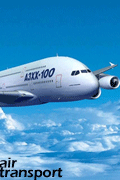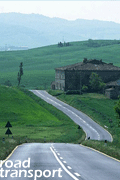|
Actor Joseph Fiennes urges motorists: Don't drive tired
Acting star Joseph Fiennes is the voice of a new Government campaign launched today to remind motorists of the dangers of driving when tired.
One in five of all crashes on major roads are caused by tired drivers but research shows many motorists are ignoring the simplest sign - the common yawn - that it's time for a break.
Road Safety Minister Jim Fitzpatrick said:
"We all want to finish our journeys as quickly as possible but being tired at the wheel is a proven killer that we cannot ignore.
"People who drive for work are particularly at risk but there are simple steps we can all take to make our journeys safer. Plan regular stops into a long trip and if you find yourself yawning pull over and take a break - this could make the difference between life and death."
A You Gov poll of British drivers announced today shows only 18% of motorists always take a yawn as a sign to pull over.
Dr Neil Stanley, a sleep expert from the Clinical Trials and Research Unit at the Norfolk and Norwich University Hospital, said:
"People read a yawn all wrong - they often mistake the energising effect that comes immediately after as a sign they can carry on, but tests prove this is not the case.
"Yawning quite simply means you're on the road to falling asleep - so if you're yawning behind the wheel it really is time to pull over."
Out of the 1,500 motorists polled by You Gov only one in five (22%) always plan breaks in their car journeys, while more than a quarter (26%) admit to having driven for up to or more than four hours without a break.
The poll also showed that:
* Four percent have driven for more than seven hours without a break.
* More than half (54%) of motorists at least occasionally try to beat their journey time on a trip they have done before.
* Three-quarters of motorists open a window to keep themselves awake on a long journey, while 4% shake their head vigorously and 3% slap their face.
Many drivers believe they can fight fatigue but the only real cure is sleep. The THINK! campaign's advice is straightforward:
* Don't start a long trip if you're already tired.
* Plan your journey to include a 15-minute break every two hours.
* If you feel drowsy find a safe place to stop (not the hard shoulder).
* As an emergency measure drink two cups of coffee or a high-caffeine drink and have a rest for 10-15 minutes to allow time for the caffeine to kick in.
The new £800,000 THINK! campaign includes a new hard-hitting radio advert featuring Joseph Fiennes, online advertising on journey planning websites, partnership marketing and messaging at service station washrooms, forecourts and petrol pumps. The campaign has been primarily targeted at people who drive for work as research shows they are at particular risk.
              
posted by transport blogs
@ 10:33 PM
permanent link |
|

FRA Releases Demographic Report on Rail Trespasser Fatalities. Trespassers account for the largest number of fatalities in the railroad industry - approximately 500 per year. In order to better understand who is trespassing, their locations, and the reasons they are on railroad property, the Federal Railroad Administration (FRA) issued a report using three years of reported trespasser fatalities. Medical examiners and coroners across the country were surveyed, and based on the best information available from those who elected to participate in the study, the average trespasser is most often a 38-year-old Caucasian male under the influence of alcohol and/or drugs, with a median household income of $36,000. More than 25 percent did not graduate from high school, and 18 percent were determined to be suicides. The report, Rail-Trespasser Fatalities: Developing Demographic Profiles, includes a state-by-state breakdown and shows California and Texas recording the highest number of such events. The report strongly recommends additional demographic analysis to reinforce and expand on these results in order to develop targeted educational and outreach programs and law enforcement initiatives to reduce the number of rail trespassing incidents.
FHWA Revises Highway Environmental Review Process. The Federal Highway Administration issued a new regulation on March 12 to help create a more consistent and predictable environmental review process for federal highway projects nationwide while continuing to protect important parks, recreation, refuge and historic resources. The new rule will simplify the Section 4(f) process and clarify factors to be considered in evaluating "feasible and prudent alternatives" for road projects.
              
posted by transport blogs
@ 10:34 PM
permanent link |
|

Submission is major step forward for third major airport that will serve as an economic engine for Chicago's Southland region
CHICAGO - Governor Rod R. Blagojevich's administration today submitted an updated airport layout plan for the South Suburban Airport in Will County to the Federal Aviation Administration (FAA).
"Submitting this plan is a major step forward for the South Suburban Airport and my administration's plans to create jobs and build the economy in Chicago's Southland region," the Governor said. "There is a broad consensus in favor of building a third major airport to serve the transportation needs of the area, and now we have a layout plan that we can move forward with."
The South Suburban Airport is expected to generate 2,000 jobs, directly and indirectly, in its first year of operation and up to 9,700 jobs by its fifth year, according to estimates prepared by Illinois Department of Transportation's Division of Aeronautics as part of the planning process.
The new layout plan shifts the airport's initial 9,500 foot runway 600 feet to the south from what was proposed in an earlier IDOT plan.
"IDOT's planning process has determined that this proposed runway layout is the most environmentally sound, cost-effective, and operationally efficient alternative, and that it will the least impact on the communities in the vicinity of the airport," said IDOT Secretary Milton R. Sees.
"After so many years of discussion and planning, and so much feedback and input from the public and community leaders, it is very exciting to submit this Preferred Airfield Alternative to the FAA," said IDOT's Director of Aeronautics Susan Shea. "What this means is that we are kicking plans to build the South Suburban Airport into high gear."
IDOT is asking the FAA to perform an Airspace Feasibility Study to determine how the runway layout would affect the nation’s overall air traffic system. While the layout plan is under review, IDOT will be preparing an Environmental Impact Statement and continuing land acquisition for the new airport.
To date, IDOT has acquired 1,940 acres in the inaugural footprint, and 69 parcels of land out of a total of 133 that are needed.
              
posted by transport blogs
@ 10:02 PM
permanent link |
|

The UK's first motorway car share lane was opened today by Transport Secretary Ruth Kelly, giving drivers a new opportunity to cut both their journey times and carbon footprints.
The 1.7-mile lane, built by the Highways Agency, links the southbound M606 near Bradford to the eastbound M62 towards Leeds. It is open to cars and taxis with two or more occupants, as well as buses and coaches, and bypasses the notoriously congested section where the two motorways merge. The new lane will save road users an average of six to eight minutes per journey - 30-40 minutes per week for regular commuters.
Ruth Kelly said:
"This new lane offers motorists the opportunity to reduce both their journey times and their carbon footprints. Currently, four out of five vehicles using this busy junction have only one occupant. I hope this new lane will encourage people to share their journeys, which will ease congestion, cut journey times and improve local air quality.
"The Government is committed to finding innovative ways to get more from our existing roads and improving journeys for motorists. We have identified around 500 miles of motorway as potential priority sites for new traffic management measures, which may also include more car share lanes."
The lane will allow vehicles on the M606 to bypass congestion at J26 of the M62 and gain priority entry on to the eastbound M62, which is a busy commuter route for motorists driving from Bradford towards Leeds. As the new lane creates extra capacity, other vehicles on the M606 and M62 could also benefit from improved journey times.
It is open to cars, vans and taxis with two or more occupants. Minibuses, coaches and buses can also use the lane and motorcyclists will also be able to use it whether carrying passengers or not.
The project has been funded by the Northern Way economic development partnership who are supporting improvements to the transport infrastructure that will assist economic growth across the north of England.
John Jarvis, Northern Way Transport Project Director, said:
"We are already suffering high levels of congestion on the North's motorways especially around our city regions where the motorways cater for long distance traffic and the needs of our resurgent city economies. If we can encourage greater levels of car sharing through the provision of dedicated lanes at suitable locations it will help lock in the benefits of additional road capacity and be good for the economy and the environment."
The lane can be used by vehicles 24 hours a day, seven days a week, and will be enforced by West Yorkshire Police.
The new lane has been constructed on the hard shoulder of the M606 and M62 eastbound slip road, connected by a short stretch of new carriageway. New lay-by areas have been provided as an emergency refuge facility for broken-down vehicles in place of the hard shoulder.
Notes to Editors
1. Work on the car share lane began in October 2007. The contractor was Balfour Beatty supervised by Carillion WSP. It has been completed on time and on budget.
2. The lane will not be open to HGVs, but the extra capacity means they could benefit from reduced traffic flows in other lanes.
3. The Northern Way brings together the cities and regions of the North of England to work together to improve the sustainable economic development of the North. It is formed as a partnership between the three northern Regional Development Agencies (Yorkshire Forward, Northwest Regional Development Agency and One NorthEast).
4. The Advanced Motorway Signalling and Traffic Management Feasibility study examined the feasibility, costs and benefits of more widespread application of traffic management techniques such as using the hard shoulder as an extra lane during busy periods to cut congestion on the motorway network. Its conclusions were announced by Ruth Kelly on 4th March. Around 500 miles of motorway (800 lane kilometres or 400 route kilometres in both directions) were identified as possible candidates for hard shoulder running schemes. The study also found that the gantries and technology used to implement hard shoulder running could also support various forms of lane reservation, including car share lanes.
              
posted by transport blogs
@ 10:40 PM
permanent link |
|

posted by transport blogs
@ 10:00 PM
permanent link |
|

When the National Threat Level is raised to Code Orange, the following steps should be taken:
On the Road:
* Be alert when driving. Look for vehicles following you, especially if there are 3 or more people in the car. If you believe you are being followed, call your dispatcher or 911 immediately.
* When leaving your facility, be aware of any possible surveillance of your facility or your truck.
* Don't discuss your cargo, destination, or trip specifics with people you don't know or on open channels.
* When stopped at a traffic light or in traffic, be aware of anyone approaching your vehicle.
* Make sure you have communication devices to contact your dispatcher and emergency officials. Carry a back-up if possible.
Stopping at Facilities:
* Leave your truck in a secure parking lot or truck stop if possible; if not, be certain someone can watch your vehicle.
* Never leave your vehicle running with the keys in it; shut off the engine and lock the doors.
* If possible, don't stop in unsafe or high-crime areas.
* Use seals or other methods to prevent and identify tampering.
* Don't preload hazardous materials shipments without adequate security.
Protecting Your Vehicle:
* Use an engine kill switch
* Use tractor and trailer brake locking devices
* Check your electronic tracking system regularly and notify your dispatcher when it's not working or tampering may have occurred.
* If you drop a trailer, use a fifth wheel lock whenever possible.
* Perform a quick walk-around to check your vehicle for foreign objects after all stops.
              
posted by transport blogs
@ 11:00 PM
permanent link |
|

WASHINGTON - The Transportation Security Administration (TSA) today announced a new canine program to enhance explosives detection capabilities in air cargo facilities nationwide. The launch of this program marks the first time that TSA is training its own employees to be explosives detection canine handlers.
The agency will train and certify more than 400 explosives detection canine teams, composed of one dog and one handler, during the next two years. Eighty-five of these teams will be TSA employee-led and will primarily search cargo bound for passenger-carrying aircraft. The first TSA teams began training in January and graduated today after a 10-week training course at Lackland AFB, San Antonio. The teams are expected to be fully operational this Summer.
TSA handlers will be non-law enforcement employees and will complement the 496 TSA-certified state and local law enforcement teams currently deployed to 70 airports and 14 mass transit systems. The new teams will enhance flexibility in the air cargo environment and allow TSA to surge resources when there is a heightened threat in any transportation system.
"Canine teams are one of the quickest, most efficient means of detecting explosives," said TSA Administrator Kip Hawley. "TSA teams provide flexibility in searching air cargo and the ability to surge resources when necessary."
The TSA teams will be deployed to airports with the greatest volume of cargo on passenger-carrying aircraft. The 12 teams graduating today will be deployed to: Dulles International, John F. Kennedy International, Los Angeles International and Miami International Airports.
In addition to these graduating TSA teams, approximately 315 TSA-certified local law enforcement teams will be trained and deployed during the next two years, raising the total TSA-certified canine explosive detection team population to more than 800 dogs. Complementing daily activities at airports and mass transit systems, law enforcement teams also participate in TSA's Visible Intermodal Protection Response (VIPR) program, providing critical capabilities and resources.
              
posted by transport blogs
@ 10:18 PM
permanent link |
|

posted by transport blogs
@ 6:03 AM
permanent link |
|

Speed limits should promote safe travel, and should be perceived by the public as safe and reasonable. If the public does not understand the consequences of speeding to themselves and others, they are less likely to adjust speeds for traffic and weather conditions, or to comply with posted speed limits. This can place serious strains on the limited resources that are available for speed enforcement and on the relationship between the police and the public. Voluntary compliance with speed limits can also be improved through greater use of speed management devices and techniques that can be built into the existing highway system, as well as incorporated in the Intelligent Transportation System.
Objectives
* Develop speed zoning guidelines with the States and local entities to use in establishing safe and reasonable speed limits on their roadways through a multi-discipline team review of existing speed-setting criteria.
* Work with States and local governments to promote increased use of condition responsive speed and hazard warning systems that give motorists information on appropriate speeds for the prevailing environmental, traffic and roadway conditions.
* Encourage States and local governments to use speed zoning guidelines and, where appropriate, revise posted speed limits to reasonable levels, and/or adopt variable speed limits. Encourage States and local governments to increase the use of physical speed management and perceptual techniques (i.e., speed humps, rumble strips, pavement markings) in locations where speed has been shown to pose a serious hazard. Use of these countermeasures will vary by highway type.
* Encourage States and local governments to consider relevant design factors and design speed prior to changing posted speed limits. Many factors, such as congestion and environment, can impact speed limits.
              
posted by transport blogs
@ 12:19 AM
permanent link |
|

posted by transport blogs
@ 11:04 PM
permanent link |
|

posted by transport blogs
@ 11:36 PM
permanent link |
|

posted by transport blogs
@ 9:37 PM
permanent link |
|

|
![]()
![]()








